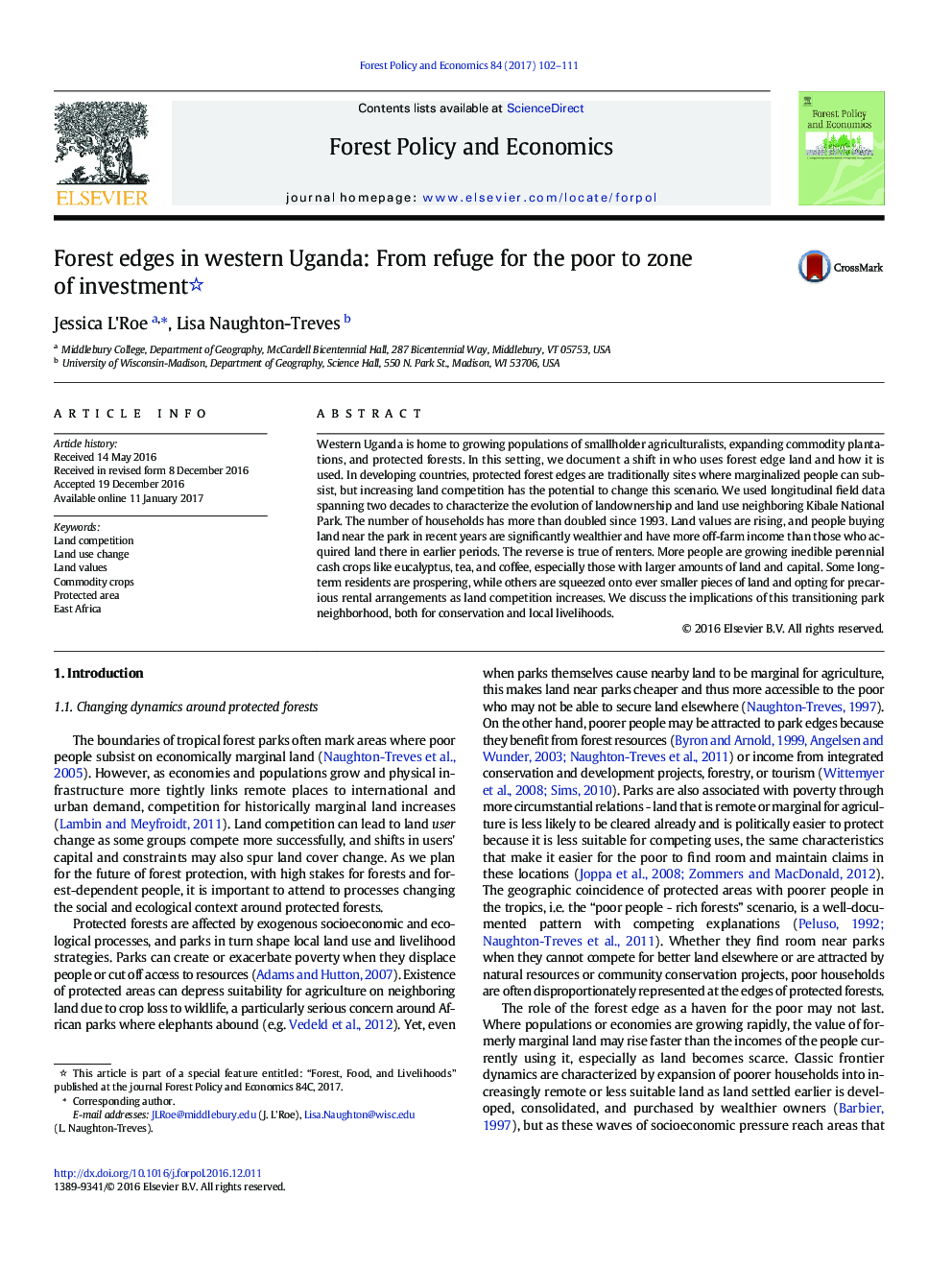| کد مقاله | کد نشریه | سال انتشار | مقاله انگلیسی | نسخه تمام متن |
|---|---|---|---|---|
| 6459722 | 1421655 | 2017 | 10 صفحه PDF | دانلود رایگان |
- We track land use and land user change over two decades on the edge of a Ugandan park.
- Recent park-edge buyers are wealthier than earlier settlers; renters are poorer.
- Eucalyptus plantations, tea, and coffee are expanding while natural forest declines.
- Better-off households invest in these crops; others struggle with shrinking parcels.
- Land values are rising along with competition over who will use the forest edge.
Western Uganda is home to growing populations of smallholder agriculturalists, expanding commodity plantations, and protected forests. In this setting, we document a shift in who uses forest edge land and how it is used. In developing countries, protected forest edges are traditionally sites where marginalized people can subsist, but increasing land competition has the potential to change this scenario. We used longitudinal field data spanning two decades to characterize the evolution of landownership and land use neighboring Kibale National Park. The number of households has more than doubled since 1993. Land values are rising, and people buying land near the park in recent years are significantly wealthier and have more off-farm income than those who acquired land there in earlier periods. The reverse is true of renters. More people are growing inedible perennial cash crops like eucalyptus, tea, and coffee, especially those with larger amounts of land and capital. Some long-term residents are prospering, while others are squeezed onto ever smaller pieces of land and opting for precarious rental arrangements as land competition increases. We discuss the implications of this transitioning park neighborhood, both for conservation and local livelihoods.
Journal: Forest Policy and Economics - Volume 84, November 2017, Pages 102-111
